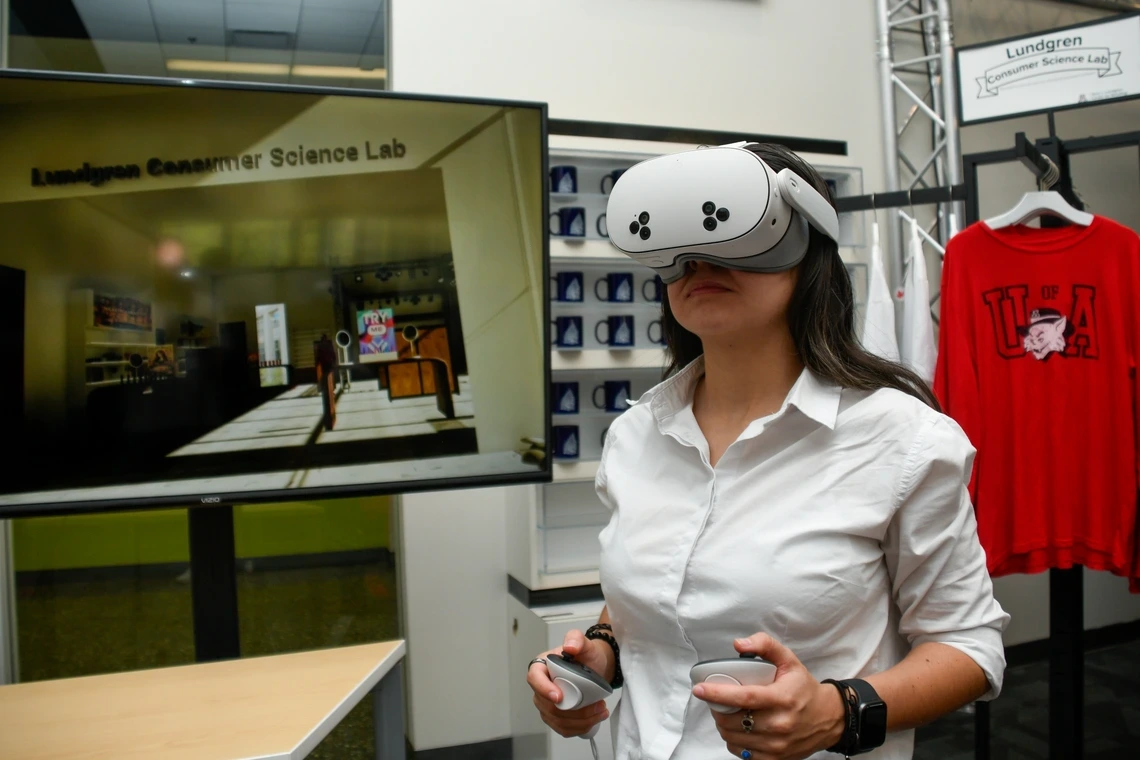U of A students are using extended reality technology to transform retail education

Retailing and consumer science student Nicole Gil-Lopez uses a Meta Quest 3 headset to explore the student‐created virtual reality “digital twin” of the Lundgren Consumer Science Lab. She and her classmates in a merchandising systems course are using extended reality technology to discover new ways of learning.
Logan Burtch-Buus/University Communications
At the University of Arizona, retailing and consumer science students are using AI and extended reality (XR) to study consumer behavior in entirely new ways. Through a full-scale digital twin of the Lundgren Consumer Science Lab, developed by the university’s AI Core program, students interact with realistic, data-driven virtual environments.
The digital twin, built with advanced scanning technologies and Unreal Engine, allows students to analyze shopper behavior, test merchandising strategies, and engage with an AI-powered cashier named Andre. Led by student developer Denisse Guerra, this initiative blends AI, XR, and real-world data to prepare students for the future of retail.
By integrating immersive technology and AI-driven insights, the University of Arizona is setting a new national benchmark for retail education.
